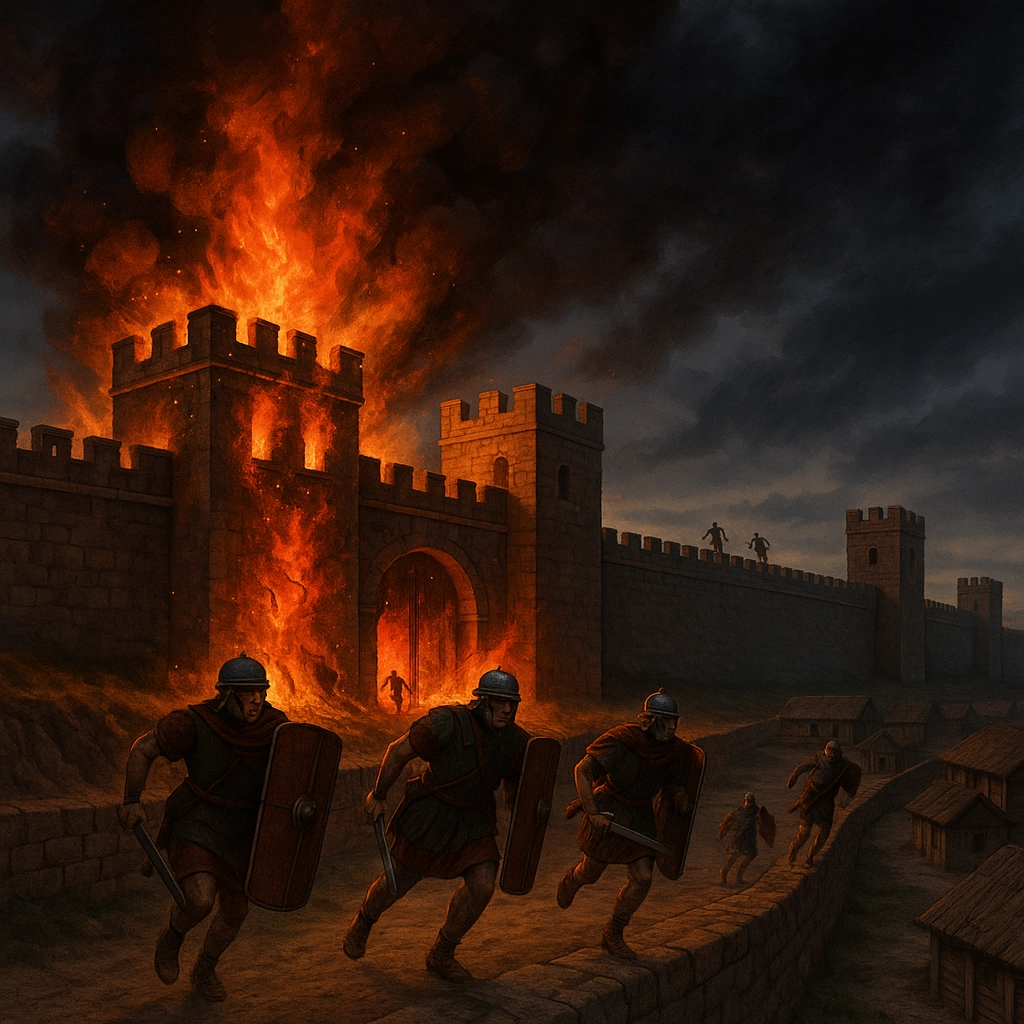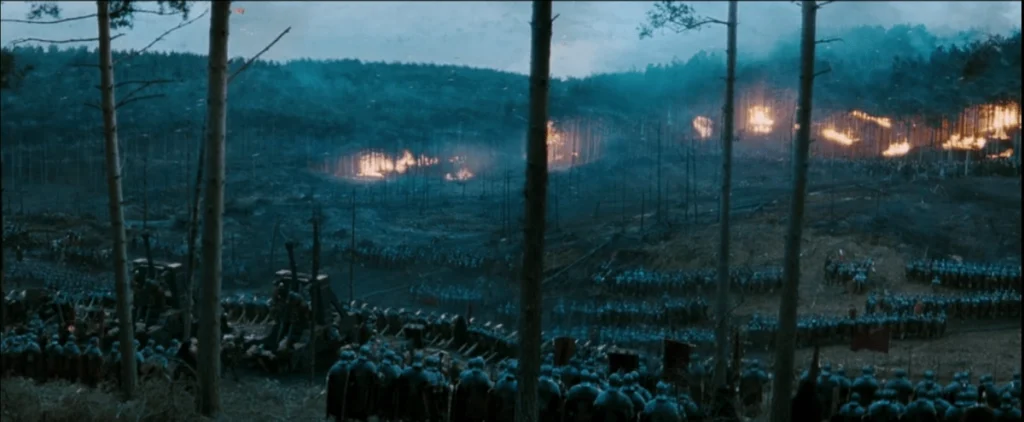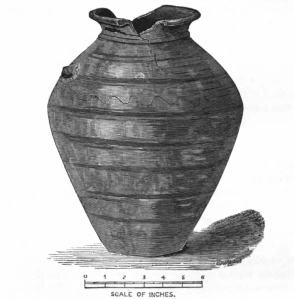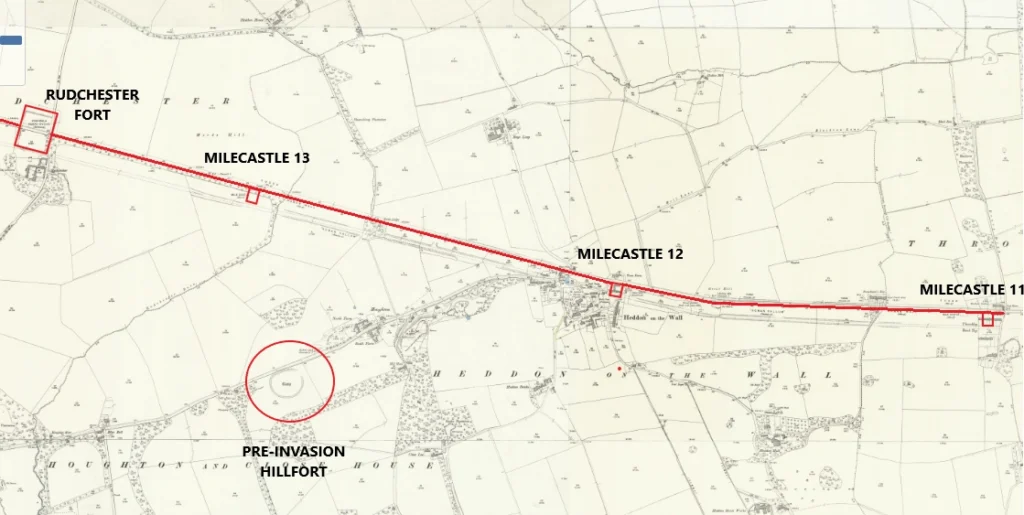By Crasterfarian

Linking the Burning of Vindobala, the Antonine Plague and the Milecastle 13 Hoard
Vindobala (modern Rudchester), constructed around AD 125 and manned by the Cohors I Frisiavonum, stood as a key Roman cavalry fort along Hadrian’s Wall. Positioned exactly between Turrets 13a and 13b, it occupied a critical spot guarding the old pre-Roman road that led south from modern-day Northumberland, branching off the Devil’s Causeway to the forded crossing point at Newburn.
Archaeological layers reveal the fort was destroyed by fire at least twice, with one of those destruction layers dated to around AD 180, a period of deep crisis across the Empire. At this time, Rome was reeling from the Antonine Plague (c. AD 165–180), likely a smallpox outbreak that swept through the Roman world, killing perhaps millions.
The military across the Empire had suffered heavily, and garrisons along Hadrian’s Wall may well have faced losses due to redeployment particularly to the Danube, where legions had been weakened by both plague and battlefield casualties during the Marcomannic Wars.

The Marcomannic Wars were a series of brutal conflicts fought between the Roman Empire and a coalition of Germanic and Sarmatian tribes along the Danube frontier, mostly during the reign of Emperor Marcus Aurelius (AD 166–180).
Hadrian’s Wall, far from the Empire’s core, may have been left dangerously understrength — and exposed to plague brought back by legionaries returning from the continent. Let us not forget some of these men would have had families in the vicus settlements that surrounded every fort, meaning they were eager to return home, possibly carrying more than just their scuta and gladii.
Vindobala’s cohort may have been depleted by illness and undermanned due to these redeployments. The local tribes, possibly the Brigantes or Novantae, may have seized the moment to strike.
The fire layer dated to around AD 180 could mark the aftermath of such an assault timed when the fort was at its weakest.
To the east, at Milecastle 13, a hoard of over 500 Roman silver denarii and several gold aurei was uncovered in the 19th century, buried beneath the milecastle floor. The coins range from the Roman Republic (as early as 138 BC) to the reign of Marcus Aurelius, with the latest dated to around AD 178 just before Vindobala was burned. The timing is unlikely to be coincidence.
Local legend adds a human layer to the mystery: the hoard was discovered by two Irish workmen, possibly during roadworks. Rather than report their find, they attempted to spend the coins in the pubs of Newcastle. The sudden appearance of ancient currency understandably raised suspicion, and the police were called. The hoard was recovered from the very disappointed labourers and eventually passed into the hands of the Duke of Northumberland.
It is believed to reside in the Alnwick Castle collection. The Fourth Duke was an avid antiquarian and collector of Roman artefacts. The Rudge Cup also resides in the castle and is well worth a visit.
The Hoards of Milecastles 11, 12, and 13, a Curious Coincidence?

In what must have been a constantly changing, wild and turbulent area, the Milecastle 13 hoard is not an isolated case. A remarkable pattern emerges along this stretch of Hadrian’s Wall one both sinister and reflective of the Roman Empire’s inability to fully tame these lands.
All three adjacent milecastles 11, 12, and 13 have been associated with significant Roman coin hoards:
Milecastle 11
- The 1879 Walbottle Hoard was uncovered, containing over 5,000 coins dating to around AD 260–270, a turbulent era of military and economic instability in Roman Britain.
Milecastle 12
- The 1820 hoard included coins from the reign of Maximian (AD 286–305) through to Arcadius (AD 383–408). The wide date range implies long-term accumulation, possibly buried during a period of growing uncertainty or impending withdrawal.
- In 1752, another large hoard of coins in wooden boxes was discovered. Very little else is known about this hoard, but the wooden containers suggest that those who concealed it did not intend it to remain hidden for long.
Milecastle 13
- The 1776 hoard of 516 gold and silver coins, buried just before the burning of Vindobala, raises compelling questions:
- Was this segment of the Wall especially vulnerable or strategically vital?
- Were these hoards buried in haste as danger approached, or were they part of routine garrison practices amid an empire under pressure?
While firm conclusions remain elusive, the clustering of these treasures hints at a broader pattern of unrest, disruption and quiet desperation as Roman Britain edged toward its twilight.
And yes, it absolutely inspires the treasure hunter in me. I always wonder what else is out there. There must be more.
These three were buried near the Wall, but what about further afield? Perhaps in the safer southern area of the hinterland, south of the Vallum?
Why Was the Milecastle 13 Hoard Buried?
Several possibilities exist:
- It may have been hidden by soldiers fleeing a massacre at Vindobala, pausing briefly at Milecastle 13 to conceal their pay.
- It could have been buried by a detachment of troops who sought refuge there after the attack, hoping to hold out for reinforcements that never came.
- Or it may have simply been a forgotten pay chest, its owners lost to plague or enemy action.
- Perhaps it was even criminal: a corrupt legionary’s ill-gotten gains from a dastardly deed.

Conclusion
Taken together:
- The dated burning of Vindobala
- The Antonine Plague reaching our shores towards the end of its furious rampage across the empire
- The buried coin hoards under Milecastles 11, 12, and 13

With these events possibly being linked, it still leaves questions as to the other two hoards at Milecastle 12 and Milecastle 11:
- Was this whole area an extremely volatile spot?
- Was the 11km between Condercum and Vindobala a ‘fort too far’ to allow adequate tactical support between forts?
- Would this have left the milecastles between them vulnerable to attack from potentially both sides of the Wall?
- We can see in the image above, a large circular pre-Roman enclosure, was this the source of the threat, sited behind the Wall?
- Did the hatred of the Roman overlords swell up every few decades, violence and anger spilling out of these hillforts to exact revenge on their subjugators?
- Maybe the gaps between hoard burials indicate the time it took for warriors from local tribes to mature and replenish those who had been killed in previous skirmishes?
Who knows? As usual, we are left with more questions than answers.
It’s my theory that, in the case of Vindobala, this was a moment where disease, fear, and local resistance converged — bringing fire, destruction and buried hopes to one corner of Rome’s northern frontier.
With Love from the Crasterfarian XX


